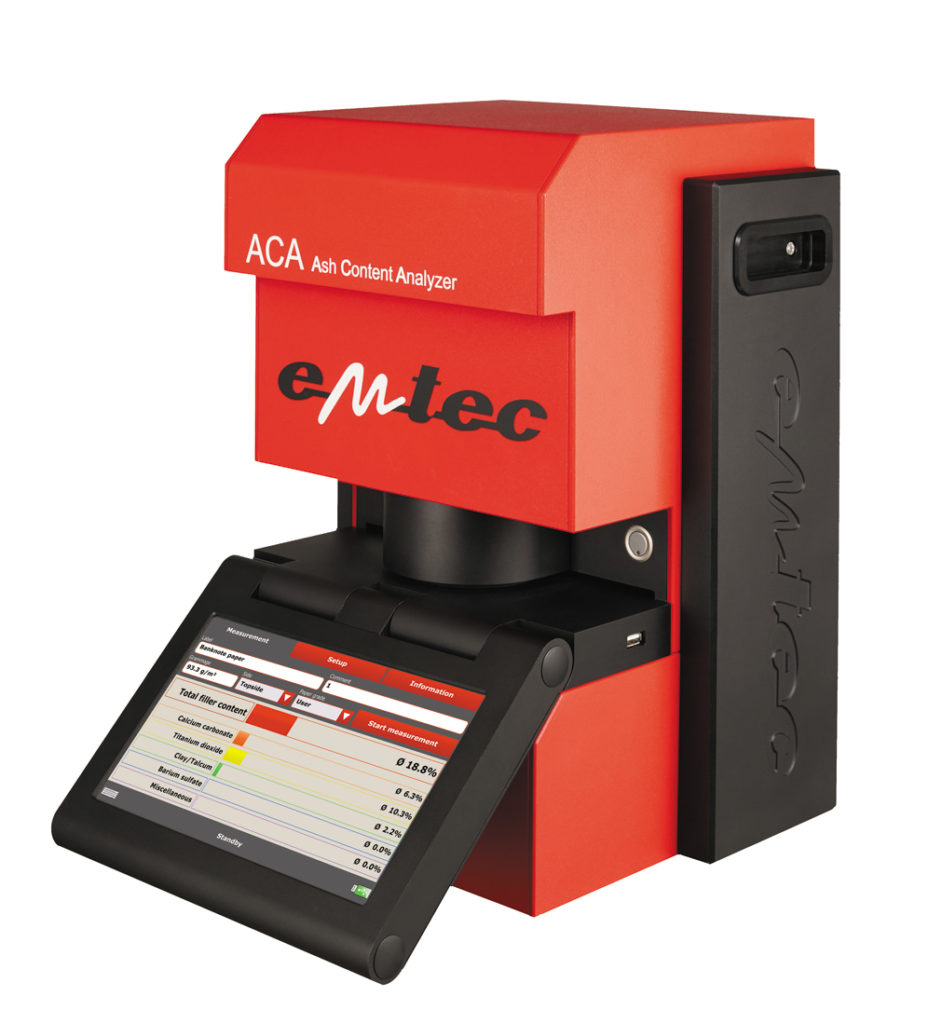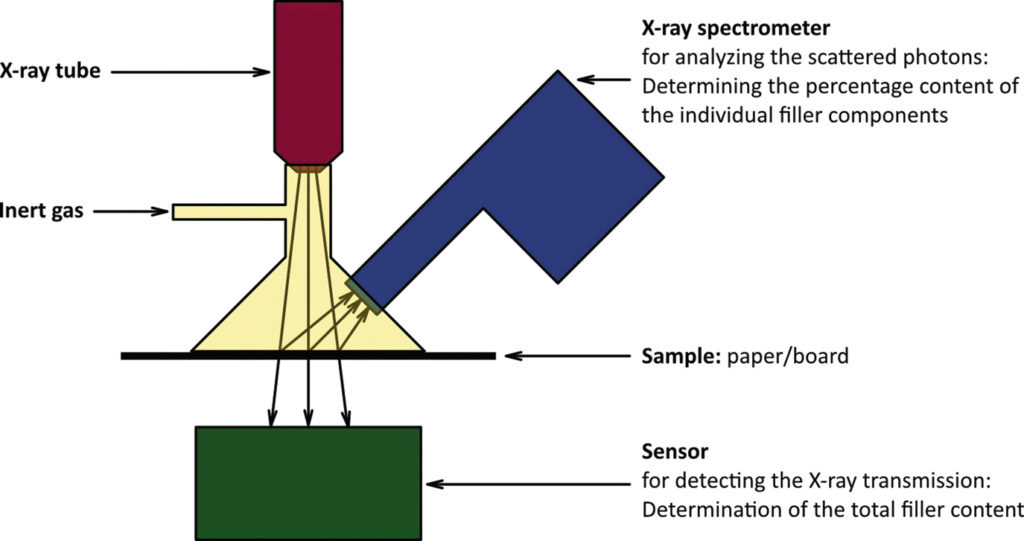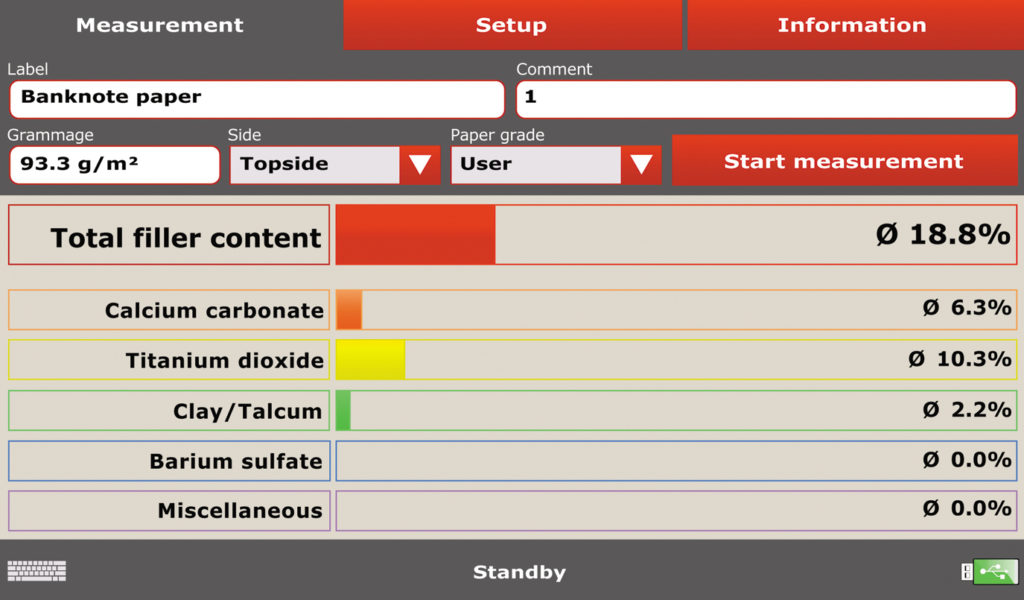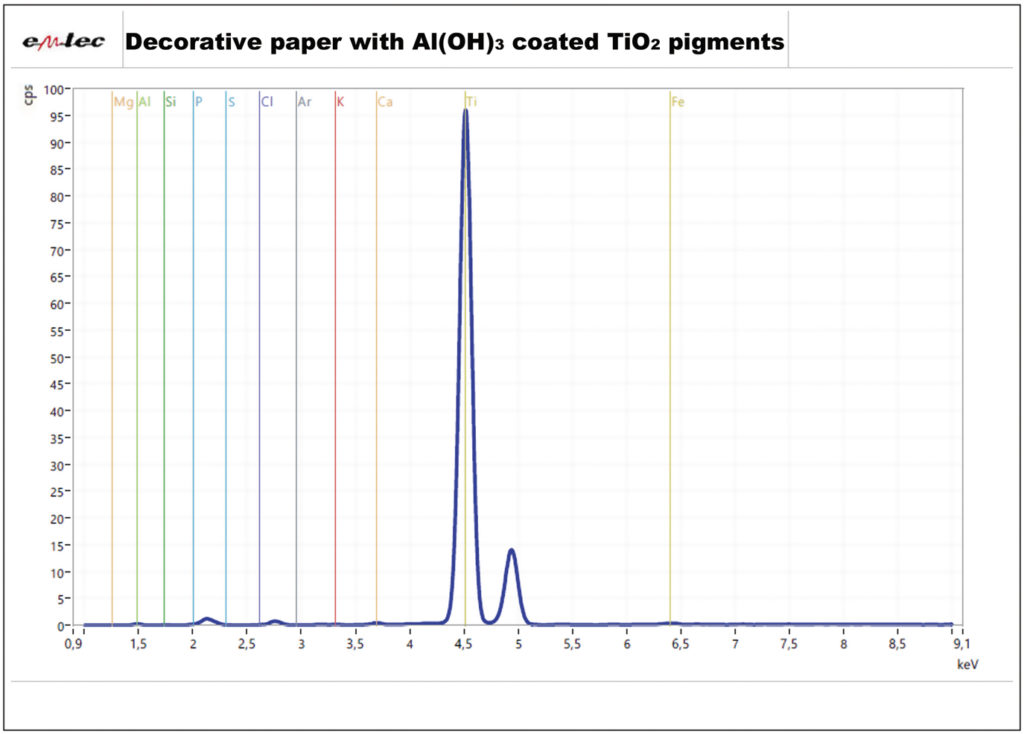ALEXANDER GRUENER
In the pulp and paper industry, mineral fillers and fines are used to influence the characteristics of the paper, either internally or on the surface. Some of these fillers and fines are very expensive and must be added in very large quantities. Typical fillers include calcium carbonate, kaolin, titanium dioxide, and talcum.

If recycled pulp is used in production, the fines and filler in the pulp present an additional element of uncertainty. An exact knowledge of the total filler content, and its components in the recycled paper or board used, helps to determine the amount of fillers and fines used additionally in production. This not only can increase the quality of the finished product, it allows for optimum addition of fillers and fines.
The traditional combustion method of measuring fines and fillers provides limited information and only a certain level of accuracy. There are two standards for the combustion of paper. If the paper is burned at 525°C, according to ISO and TAPPI Standards, mills can determine only the total ash content as a summarized value. Combustion at 900°C provides results for calcium carbonate and clay, plus (if used) titanium dioxide. The procedure takes three to seven hours, is dependent on the operator, and has an accuracy of approximately five percent in routine lab work.

In an environment where resources (and therefore costs) need to be saved without reducing quality, decisions shouldn’t be based on slow and limited information. Introduced in 2020, the emtec ACA (Ash Content Analyzer) offers a new way to measure the total mineral filler content as well as the percentage of the individual fillers and fines of paper and board.
FAST AND ACCURATE
Compared with the combustion method, the ACA has many advantages. It is very fast: a result is available after only about 30-60 seconds. It is independent from the operator and it is very accurate. The accuracy of the test results can be up to 0.1—0.3 percent (abs.) Yet the biggest advantage, when compared with the combustion method, is that the ACA device measures the total filler content as well as the individual/single components of the filler by percent. Fillers and fines that can be measured include calcium carbonate, kaolin, talcum, titanium dioxide, iron oxide, barite white, and others.

The ACA’s measuring method combines X-ray fluorescence analysis and the transmission method. First, the captured X-ray fluorescence spectra are qualitatively evaluated; afterwards, they are quantitatively determined concerning the concentration of the detected filler components. The signal peaks are converted using complex mathematical functions (algorithms) in the corresponding concentrations.
Figure 1 illustrates the measuring principle. When the measurement is started, a cylinder closes the area around the paper sample and the area is flushed with helium gas to make sure that the argon in the air does not influence the measurement. Technicians can evaluate the results in different ways, as shown on the device display (Fig. 2), which presents the results for total filler content and individual fillers by percentage; total filler content and the individual components of the total filler can be measured within approximately 30 seconds.

More information regarding the background of the “miscellaneous” content can be found in the PC software, which runs the device if connected to a PC or laptop. After proper training, the user will also be able to make findings from the spectra of the measurements (see Fig. 3 for an example.)
THE SPECTRUM ADVANTAGE
There is a lot of information that can only be found with the help of the ACA spectrum measurement. The important question here is: what relationship do the different elements have to each other? A certain relation between aluminum and silicium, for example, is a sign of kaolin. If there is only aluminum and no silicium peak, it is very likely that the aluminum comes from coated titanium dioxide pigments. There are many other examples that show the important information that the ACA can provide, even indirectly.
Table 1 compares test results of white top liner for corrugated board, tested with the ACA and by the combustion method. According to ISO 1762, the combustion has been done at 525°C. With the ACA, the separate determination of fillers in the white top and the brown base is possible without splitting the white top from the brown base. The combustion method is comparatively very time-consuming, especially if a profile must be measured. The accuracy is limited, because the layers must be split and fiber transfer between layers cannot be avoided completely.

Although the layers don’t need to be split to obtain separate results for the white top and the brown base using the ACA test, Table 1 shows separate results for the two layers. If the results from the ACA tests and the combustion for the total ash content of the white top are compared, sample 4 shows the biggest deviation between the two methods, still only 0.6 percent (abs.) The results for the individual components are even closer to each other.
To optimize product quality and the consumption of fillers and fines, mills must have a deep knowledge of the fillers and fines used in recycled fiber. The combustion method provides only limited information and thus is not a big help when mills need detailed information.
With the newly-introduced emtec ACA Ash Content Analyzer, mills can get a much better idea of the presence and concentration of fillers and fines as used in the paper production. Within only 30 seconds, the total filler content as well as the individual components are measured in a way that is accurate, reliable, and fast.
Alexander Gruener is global marketing and business development manager for emtec Electronic GmbH, which provides testing solutions for a variety of industrial applications. Learn more at https://www.emtec-electronic.de/en/.
 Paper 360
Paper 360